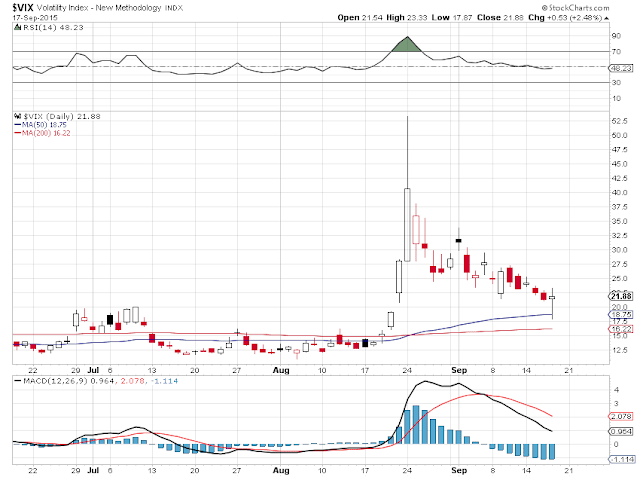“Our clients will call up saying ‘I hear the Comex is running out of gold, what do you make of it?’ and our quick answer is that this is a non-issue,” Jeffrey Christian, managing director at CPM Group, said in a telephone interview.
“Even if you look at the fact that registered stocks have declined, the fact of the matter is most Comex futures contracts” are cash-settled, and traders don’t take delivery of the metal, he said.
While the percentage of Comex gold open interest covered by total Comex reported stocks has fallen over the past year and a half, it “remains very high by historical standards and presents no perceptible risk of imminent problems with deliveries,” CPM Group said in a report dated Sept. 14...
Barclays Plc said in a report this week that emerging-market demand for gold has shifted some metal into Asia, and that “coverage of physical stocks in Comex remains solid.”
Joe Deaux, Gold Shortage Theory Derided as Comex Seen Well Supplied, Bloomberg News, Sept 16, 2015
“Anything that has more upside than downside from random events (or certain shocks) is antifragile; the reverse is fragile.”
Nassim Taleb, Antifragile
Gold is anti-fragile. This is why it must be handled with care, and not with fragile systems. Gold is intractable to the kinds of manipulation by the financial system that can bend paper to its will. This is why they hate gold, and seek to paper over it with leverage and secrecy.
Above is a commentary on the physical bullion situation at the Comex as it was reported at Bloomberg News yesterday. The 'deriding', which means ridicule and contempt, is coming from CPM group's Jeff Christian, and from a report from Barclays.
The title of the article is a bit odd, because I have not see any 'theories' about this subject at least here, just presentations of the facts using exchange provided information. And as for deriding, it seems more like a sign of weakness and fear than solid reassurance. But that is just my own experience in seeing that sort of thing when someone points out a changing situation that could pose a problem.
One thing the story fails to make clear is that only registered gold is deemed deliverable to fulfill futures contracts. Yes, all the gold in all the warehouses could potentially satisfy demand, IF IT WAS UP FOR SALE. But it is not.
The total supplies at the Comex have as much to do with the current demand for bullion as all the automobiles in your neighborhood have on the price that you are going to pay tomorrow for a used car, eg. the calculation cannot include items that are not up for sale. Yes there are many cars that would satisfy your requirements. But only those that are for sale are available for you to drive home.
Jeff Christian says that "even if you look at the fact that registered stocks have declined..."
Yes, 'even if' you look at the heart of the argument, 'registered stocks have declined,' and that is quite the understatement of the facts.
Here is the history of 'registered gold bullion' on the Comex going back to 2001.
And of course if almost no one asks for any of the gold, then there is no problem. Yep.
This is the problem. For anything except speculating with paper the Comex is now significantly fragile, moreso than at any time it has been in the last twenty years at least.
Jeff goes on to say that "most Comex futures contracts” are cash-settled, and traders don’t take delivery of the metal,"
And that is correct. Here is the history of deliveries, ignoring any cash settlements, on the exchange.
As should be easy to see, the amount of gold bullion deliveries is declining quite a bit.
The Comex lacks the market discipline of delivery of the goods and restraint on the potential hypothecation of available supply. What is acting to hold leverage to some reasonable level other than 'nothing has broken yet.'
Let's take a quick look at the ratio of total contracts to registered gold, that is gold up for sale.
The Comex is a significant price discovery market for the global gold supply. The data shows that it has diverged significantly from the physical bullion markets primarily in Asia.
While the inventories at the Comex remain flat overall and declining sharply with regard to deliverable bullion, the physical deliveries of gold into India and China are increasing steadily.
And I hasten to remind everyone that gold is truly a global market.
Nick Laird at sharelynx.com has created chart that tracks the known physical gold demand for what he calls 'The Silk Road.'
Even though I do not expect a default at Comex, as I have said many times before, the point is that if there is even a mild problem in one of the physical markets in Asia or London, the Comex is price positioned for a market dislocation and potential fails to deliver bullion on request.
The deliverable gold is a little under 6 tonnes. But even if price were no object, the total gold held in private hands in all the Comex warehouses is about 6,716,000 troy ounces, or roughly 209 tonnes. That is all of it no matter who owns it or why.
Or less than one month's supply for the Silk Road countries.
Normally none of this *should* be problem, although one has to admit that according to historical norms the amount of deliverable gold is very thin by any measure. Why is this? Why are the better informed withdrawing their bullion from the deliverable category? I read that they are afraid of the bullion being caught in a 'short squeeze,' but the trader who said that did not specify a short squeeze where.
This week I learned from an interview with Jim Rickards that some very large bullion banks were said to be using the Comex gold futures to hedge shorts in bullion delivery markets in London, called the LBMA.
That kind of a hedge might work to guard against paper losses, but against a genuine fail to deliver in a physical market you can see that the immediate deliverables at these prices are about 6 tonnes, which is a rounding error on the Silk Road.
It's the fragility, always the fragility.
What if something that is not completely normal and expected happens? What if, instead of 2% of the contracts asking for delivery, a delivery short squeeze in London prompts 4 or 5 percent of the contract holders to attempt to exercise their contracts to receive physical bullion to cover their obligations elsewhere?
The fragility of such an arrangement is bothersome to anyone from outside who looks at it from a systems engineering perspective.
If some firms are using the Comex as a backup system for gold deliveries in London and points east, it is hardly equipped to take that role without a significant market dislocation in price.
If I was only working short term trades and would never mind a settlement in cash, then the Comex seems like a fine place to do the trade.
However, if my goal is to have a solid claim on physical bullion, even within some reasonable length of time measured in several months, it does not appear that the Comex is appropriate for that particular objective.
Do you see the potential problem here that is so blithely 'derided?'
I do not wish to alarm anyone. I am putting out the word because I do not think people understand the situation that has developed, over the past two years in particular, as shown by the potential claims per ounce.
Globally huge market with increasing demand, a market where the available inventories are exceptionally thin, and a price that is derived without a tight rein on leverage and the discipline of delivery. What could possibly go wrong?
The usual retort is 'it has not broken yet.' Yes, and in the light of our experience over the past ten years or so, some might find rather thin comfort in that. The important thing is for traders and investors to be fully informed, that they may use financial instrument in a manner that is appropriate to their objectives.
For example, using Comex as a backup for bullion positions on the LBMA might be fine, if you are not expecting to receive delivery of bullion that can be used to satisfy your obligations there.
The exchange might consider another look at their rules in the light of this unusual 'leverage' of potential claims to bullion, rather than count on price fixing all problems, and few standing for delivery, especially in a changing and very dynamic global market.
I do not have good visibility into the leverage and available inventories at the LBMA in London. If those are in any way similar to the Comex, then I would take some action fairly quickly to secure my ownership of bullion given the potential for a misstep that spins out of bounds.
If you hold an allocated receipt that is as 'good as gold?' Tell that to the investors who used MF Global, and found their holdings sorted out in court against a lawyered up megabank.
I do not know Jeff Christian or the fellow from Barclays. I am sure that they have good reasons for what they are saying and the advice they appear to be giving to their customers. I am sure they can all work out all their concerns and particular issues among themselves.
Objectives amongst customers do vary and it is the fiduciary duty of any advisor to help them make an appropriate choice. And I can see many uses for Comex positions that are entirely suitable for some. A short term trader for instance, who in merely placing wagers that he expects to settle for cash.
But as for this article in Bloomberg, it is a bit of a gloss, heavier on the deriding and short on information for readers to use in making their own informed decisions. 'Trust us' and 'nothing has broken yet' are, as I said previously, non-starters these days.
I have set forth only a few of the oddities that are becoming apparent in the gold market. There are quite a few more, including backwardation and tightness in the London physical market as noted by Peter Hambro and an analyst at Mitsubishi recently, and in articles by Koos Jansen and Ronan Manly.
How about the pivotal London market, is it 'well-supplied?' How well supplied is it? What is the potential impact on the Comex of a bullion shortfall at the LBMA?
Jim Rickards had something to say about the LBMA and its relationship with the Comex recently. You may read it in a larger commentary titled On the LBMA and Their Unallocated Holdings - 'Tightness' In Gold Bullion - Backwardation.
Has there ever been a 'stress test' of what it would be like at the Comex if there were an afternoon failure to deliver physical bullion in London? Or are you assuming as your baseline that such a shortfall could never happen in any non-Comex market? Is the process at Comex for some event like that, besides halting the exchange and forcing cash settlements?
I do think that one can become so involved in a system, for so long a period, that when it changes, when the market dynamics start shifting, the old hands may be the last to notice the forest for all those familiar trees. That is why companies bring in quality teams to inspect their processes for soundness and failure points.
What could have possibly changed in the global gold market in the past few years. "Barclays Plc said in a report this week that emerging-market demand for gold has shifted some metal into Asia,"
How about this? Some shift. Some metal.
Here is what Kyle Bass recently had to say about the situation. Maybe you can 'deride' him. Then again, maybe not.

















































